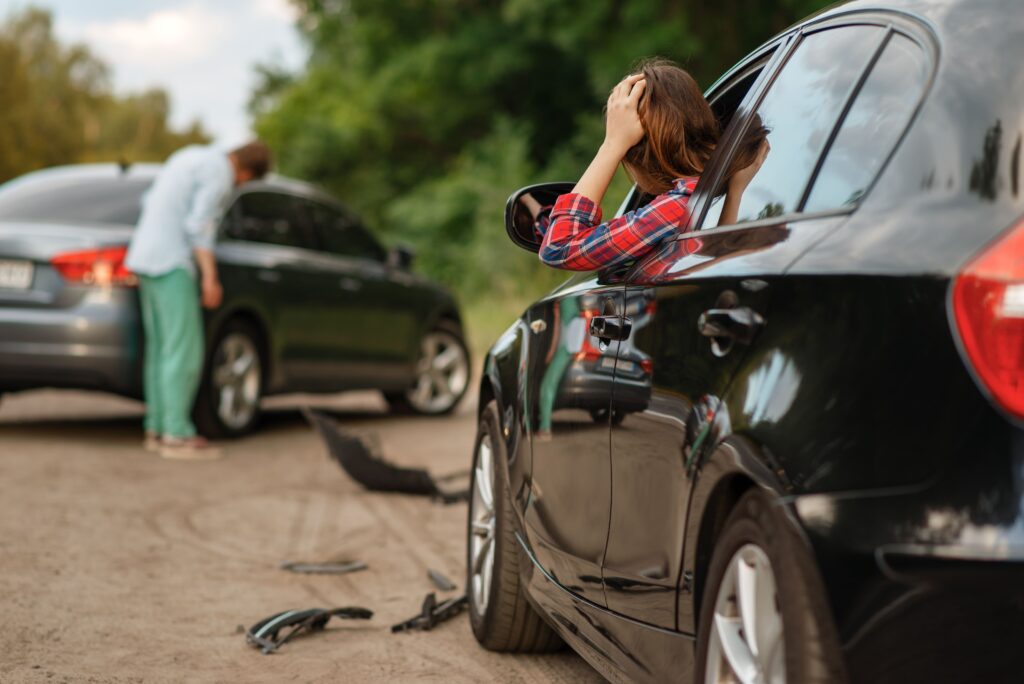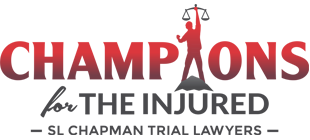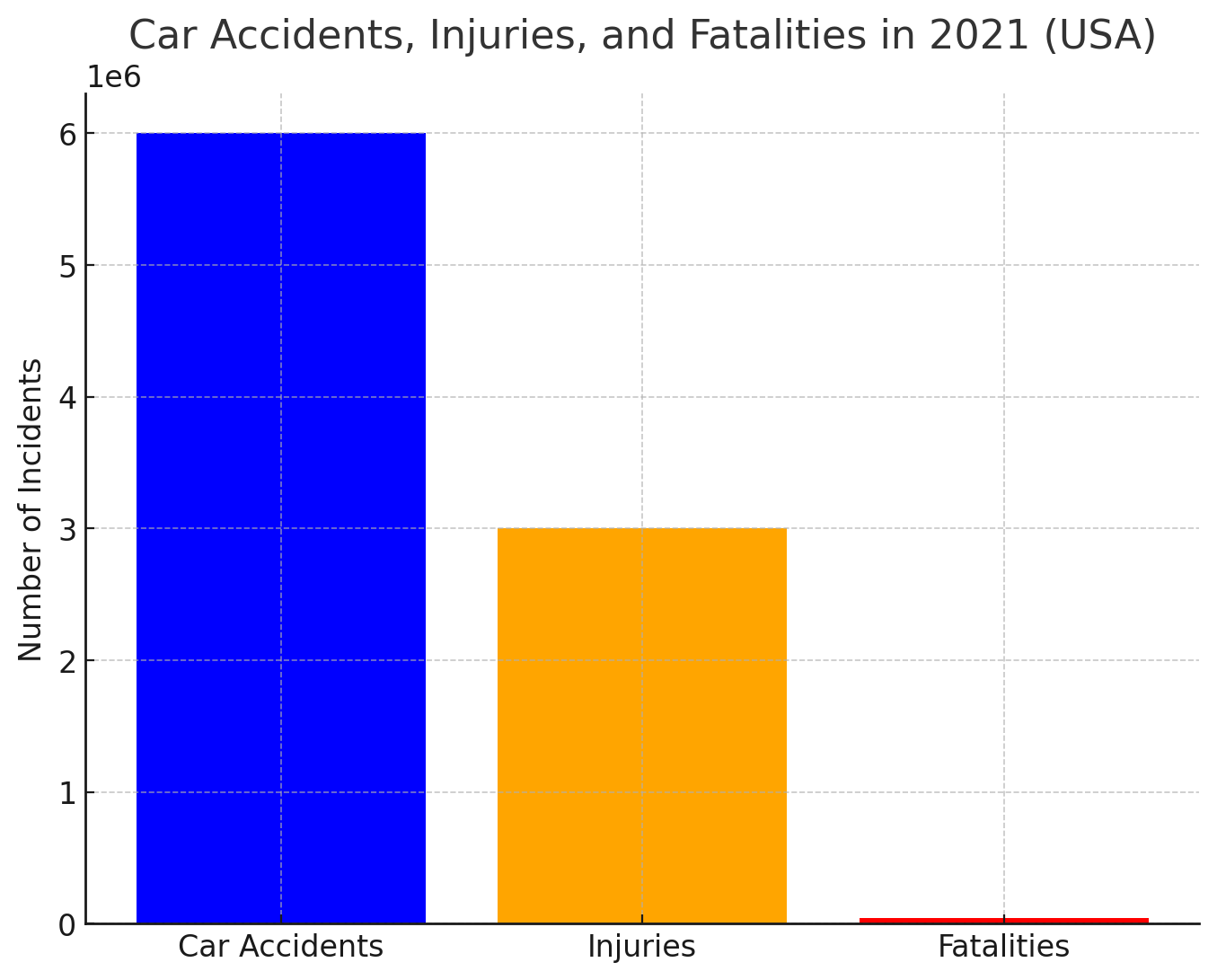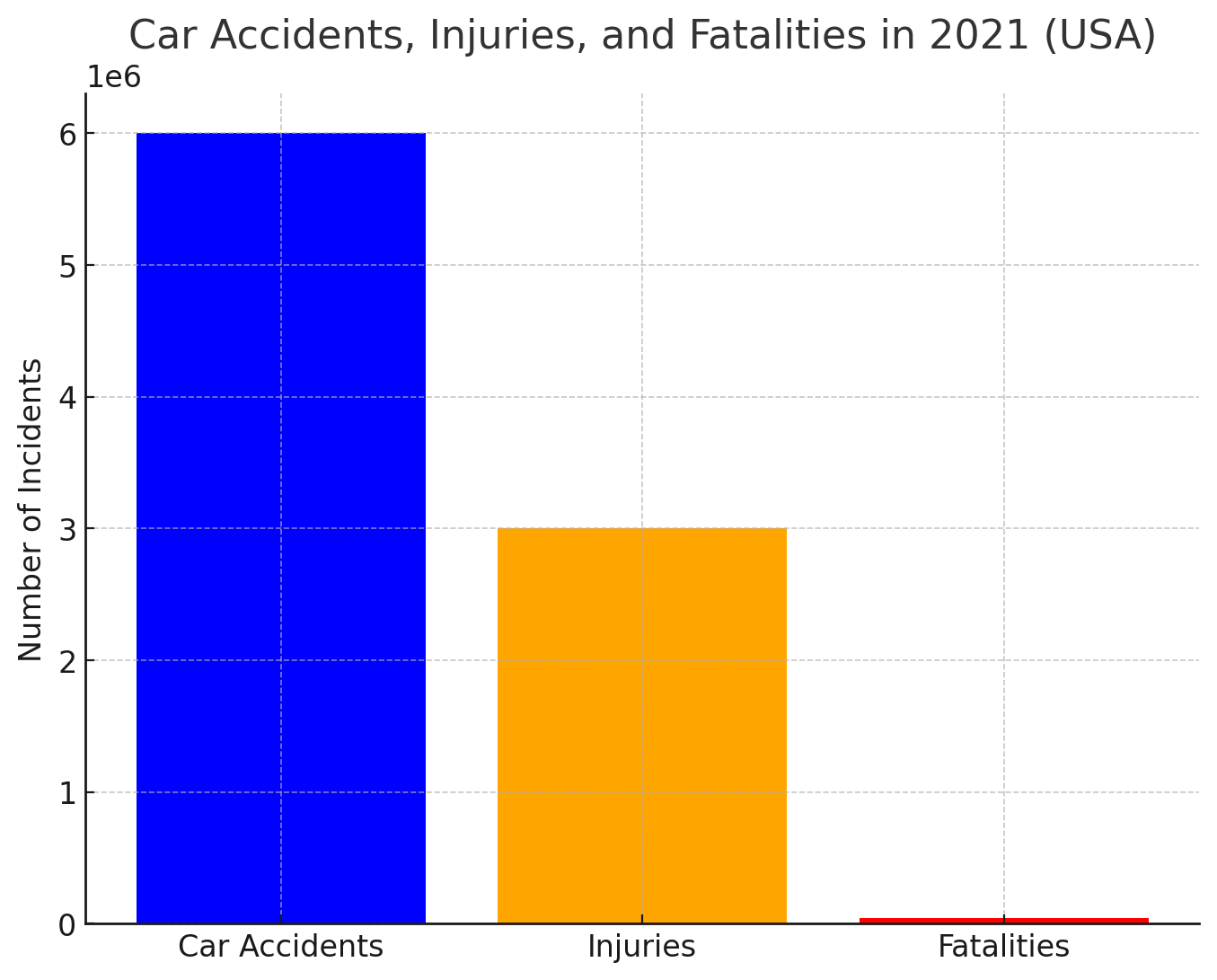
Scottsdale Car Accident Lawyer
Representing Car Collision Victims With Care
Our Scottsdale, AZ car accident lawyer understands that the aftermath of an auto accident can be overwhelming. Our team is familiar with the unique traffic patterns in Scottsdale, and we’re dedicated to providing comprehensive support to those affected by car accidents. Whether it’s dealing with insurance claims, understanding Arizona’s specific traffic laws, or representing clients in complicated litigations, our attorneys at SL Chapman Trial Lawyers are committed to guiding our clients through these challenging times with compassion. Our goal is to help you receive the best possible outcome and help you move forward from your accident with security and peace of mind.
Our founding lawyer, Attorney Brad Lakin, has been practicing civil litigation since 1997. We have the experience and focus that it takes to effectively advocate for injury victims. Call or message SL Chapman Trial Lawyers today to set up your free consultation.
Table Of Contents
- Representing Car Collision Victims With Care
- Arizona Car Accident Laws
- Common Types Of Car Accidents
- Scottsdale Car Accident Statistics
- Scottsdale Car Accident FAQs
- Scottsdale Car Accident Glossary
- SL Chapman Trial Lawyers, Scottsdale Car Accident Lawyers
- Contact Our Scottsdale Car Accident Lawyer Today
Prepping Your Car Accident Claim
Preparing and handling a car accident claim requires meticulous documentation and a systematic approach so that you present a strong case to your insurance company or, if necessary, in court.
Take pictures of vehicle damage, injuries, skid marks, road conditions, traffic signs, and the overall scene. These can provide a visual account of the incident. Obtain contact details of any witnesses. Their statements can corroborate your version of events. If the police were called to the scene, make sure you get a copy of their report.
Immediately after the crash, see a doctor, even if you feel fine. Some injuries may manifest symptoms later. Document all medical visits, diagnoses, treatments, and prescriptions. Request copies of medical reports and bills. Write a detailed account of the collision as soon as possible while the memories are fresh. Keep a diary of your physical and emotional state following the accident. A post-accident journal can help in claims for pain and suffering.
Notify your insurer about the accident promptly. Be factual in your report. Avoid speculating or admitting fault. Compile all receipts and bills related to the accident, including medical bills, repair estimates, rental car costs, and any other related expenses. If you’ve missed work due to your injuries, get documentation of lost wages from your employer.
Avoid Accepting Early Offers
Insurance companies might try to settle quickly to minimize their payout. Be cautious about accepting early offers, especially before you understand the full extent of your injuries and damages. If your claim is substantial or contested, consider consulting our Scottsdale car accident attorney. We can advise you on the strength of your claim, the potential compensation, and guide you through the process. Lawyers often work on a contingency fee basis in these cases, meaning we only get paid if we secure compensation for you.
Document all communication with your insurance company, including dates, times, names, and the content of the discussions. Keep a dedicated folder or digital file with all the evidence, reports, bills, receipts, and correspondence related to the accident. This will make the claim process smoother and is especially useful if legal action becomes necessary.
Follow up regularly on your claim. If the insurance company’s offer doesn’t match your expectations or the severity of your damages, be prepared to negotiate. Having one of our attorneys in your corner can be invaluable in this process. By meticulously preparing your car accident claim, you enhance the likelihood of a favorable resolution.
Arizona Car Accident Laws
Car crashes are stressful events, and the legal aftermath can often add to this stress. Understanding Arizona’s specific laws regarding car accidents is vital for anyone managing this challenging terrain. From knowing the state’s fault-based system to understanding your insurance requirements, being informed is your first defense. Our lawyer’s understanding of the state’s laws and dedication to our clients’ rights can be invaluable in seeking the compensation you deserve. Here, we’ll delve into some of the key legal aspects you should be aware of if you find yourself involved in a car accident in Scottsdale.
Fault-Based Insurance System
Arizona operates under a fault-based insurance system, which means that the person responsible for causing the car accident is also responsible for covering the damages. This is a critical aspect to understand, as it directly impacts how you can seek compensation for injuries or damages incurred. After an accident, the injured party can choose to file a claim with their own insurance, the at-fault driver’s insurance, or pursue a personal injury lawsuit.
Statute Of Limitations
Time is a significant factor in Arizona car accident cases. The statute of limitations sets a deadline for filing a lawsuit. In Arizona, you generally have two years from the date of the accident to file a personal injury claim. For property damage claims, the same timeframe applies. Missing this deadline could mean losing the right to legal recourse, emphasizing the importance of timely action.
Comparative Negligence In Arizona
In some car accidents, the fault isn’t black and white. Arizona adheres to a comparative negligence rule. This means that if you are partially at fault for the accident, your compensation may be reduced by the percentage of your fault. For example, if you are deemed 20% at fault for the accident and your damages amount to $10,000, you would only be eligible to receive $8,000 in compensation.
Minimum Insurance Requirements
Arizona law mandates that all drivers carry minimum amounts of liability insurance. As of 2020, these requirements are $25,000 for bodily injury to one person, $50,000 for bodily injury to multiple people in one accident, and $15,000 for property damage. These minimums are important to note as they represent the baseline coverage you can expect in the event of an accident.
Common Types of Car Accidents
Car accidents encompass a broad spectrum of incidents, each with its unique causes, consequences, and legal complexities. Below is an expanded overview of the common types of car accident cases:
- Rear-End Collisions – These accidents typically occur due to tailgating or abrupt stopping and can result in injuries such as whiplash, spinal issues, or head traumas. Although the trailing driver is usually at fault, unique circumstances can alter liability, such as malfunctioning brake lights in the leading vehicle.
- Side-impact or T-bone accidents – These happen when one vehicle’s front collides with the side of another, commonly at intersections. They can cause significant injuries to occupants, especially at the point of impact. Determining fault often hinges on traffic signals, right-of-way rules, and driver attentiveness.
- Head-On Collisions – Among the deadliest, these occur when vehicles moving in opposite directions collide. Causes may include distracted or fatigued driving, driving under the influence, or veering into oncoming traffic. The consequences are often catastrophic, frequently resulting in fatalities or life-altering injuries.
- Vehicle Rollovers – Typically involving higher vehicles like SUVs and trucks, rollovers may be caused by high-speed turns, collisions, or uneven road surfaces. Such accidents pose a high risk of severe injury due to the vehicle’s violent turnover and potential for occupant ejection.
- Hit and Run Accidents – These involve a driver fleeing the scene post-accident. The challenges here include identifying the fleeing party and addressing legal claims in their absence. Victims may have to rely on uninsured motorist coverage or seek legal avenues to trace the responsible party.
- Multi-Vehicle Pile-Ups – Involving numerous vehicles, these accidents are complicated due to multiple involved parties, insurers, and potential causes. Commonly occurring in poor visibility or on busy highways, determining fault can be a lengthy and intricate process.
- Drunk Driving Accidents – Incidents caused by intoxicated drivers often result in severe penalties, including criminal charges. The impaired judgment and reduced reaction times of drunk drivers significantly increase the risk of serious accidents.
- Distracted Driving Accidents – With the prevalence of smartphones and other in-car distractions, these accidents are increasingly common. They stem from drivers not fully focusing on the road, leading to delayed reactions to traffic conditions.
- Accidents Due to Poor Road Conditions – Substandard road maintenance, inadequate signage, or active construction sites can cause accidents. Liability may extend to governmental or private entities responsible for road upkeep.
- Commercial Vehicle Accidents – Involving large vehicles such as trucks and buses, these accidents can be especially destructive due to the size and mass involved. Unique to these cases are the specific regulations and industry standards that commercial drivers and companies must follow.
Each type of accident presents distinct challenges in terms of investigation, establishing fault, and seeking compensation, underscoring the need for knowledgeable legal assistance in such cases.
Scottsdale Car Accident Statistics
According to the National Safety Council, car accidents are the leading cause of personal injury in the United States. In 2021, there were over 6 million car accidents in the United States, resulting in over 3 million injuries and 40,000 fatalities. Drunk driving and speeding are two of the most common causes of fatal car accidents.
If you have been injured in a crash caused by another party, make sure you have our dedicated car accident lawyer advocating for you to get the financial compensation you may be entitled to.
Scottsdale Car Accident FAQs
What’s Arizona’s Statute Of Limitations For Auto Accident Claims?
For personal injury claims in Arizona, which include car accident injuries, the statute of limitations is generally two years from the date of the accident. If you fail to file a lawsuit within this two-year window, you will most likely be barred from bringing a claim regarding that accident in the future. However, there can be exceptions or nuances depending on the specifics of the case, so it’s imperative to consult with our qualified Arizona attorney soon after the accident so that your rights are protected and to understand any deadlines applicable to your situation. Contact us today for personalized legal support.
How Long Will I Have To Wait To Receive My Settlement?
The timeframe for receiving compensation after an accident can vary widely based on several factors, including the jurisdiction, the details of the case, the severity of your injuries, and the willingness of involved parties to settle. After reporting an accident to the insurance company, a straightforward claim with clear liability might result in a settlement offer in a matter of weeks to a few months. However, if there are disputes over fault, the severity of injuries, or the value of the claim, the process can take longer, even several years if the case goes to trial. Furthermore, in situations where a lawsuit is filed, the statute of limitations dictates how long victims have to initiate a claim, but the actual resolution and compensation can occur well after that timeframe, especially in contentious or complicated personal injury cases.
What Do The Terms “Negligence” And “Liability” Mean?
Negligence and liability are fundamental concepts in determining fault during a car accident. Negligence refers to a party’s failure to exercise the standard of care that a reasonably prudent person would have exercised in a similar situation. In the context of car accidents, negligence might involve actions such as speeding, driving under the influence, or disregarding traffic signs. Liability, on the other hand, refers to the legal responsibility one party holds due to their negligent actions. If a driver’s negligence causes a collision that results in harm to another person or property, that driver is typically deemed liable for the damages. To establish liability in a car crash, one must prove that the other driver’s negligence directly led to the harm or damage sustained. Once liability is established, the at-fault party or their insurance company is usually responsible for compensating the injured party for their losses.
What Damages Can I Recover?
Our lawyer plays an influential role in helping accident victims handle the complicated legal systems to recover various damages arising from incidents like car accidents, slips and falls, or medical malpractice. Primarily, our lawyer can assist in obtaining compensatory damages, which aim to restore the victim to the position you were in before the incident. These can be broken down into economic damages, covering quantifiable losses such as medical expenses, lost wages, property damage, and rehabilitation costs; and non-economic damages, which address intangible harms such as pain and suffering, emotional distress, loss of consortium, and diminished quality of life. In cases where the defendant’s conduct was particularly egregious or malicious, our personal injury lawyer might also pursue punitive damages, intended to punish the wrongdoer and deter similar future misconduct.
Scottsdale Car Accident Glossary
At SL Chapman Trial Lawyers, our Scottsdale, AZ personal injury attorneys know that legal cases often use specialized terminology that may seem complicated. If you’ve been involved in a car wreck, understanding some of the key legal terms and jargon can help you deal with the process of seeking compensation for your injuries and damages. Our award-winning Scottsdale car accident lawyer can break down some important legal terms you might encounter during your case.
Contingency Fee
A contingency fee is a common payment structure in personal injury cases. This means that the lawyer representing you does not charge an upfront fee, but rather, they receive a percentage of the settlement or award if your case is successful. The percentage varies, but it typically ranges from 25% to 40%. This fee arrangement makes sure that individuals who may not have the financial means to pay for legal services can still access professional representation. If the case is unsuccessful, the client doesn’t owe the lawyer any fees, which reduces the financial risk for accident victims.
Claim
A claim refers to the formal request made by the injured party to either an insurance company or the court for compensation due to damages suffered in an accident. In the context of a car accident, this can include claims for medical expenses, property damage, lost wages, and other related losses. Depending on the specifics of the case, a claim can be resolved through negotiation with insurance companies or may proceed to litigation if a fair settlement is not reached. Filing a car accident claim initiates the legal process of seeking redress for your injuries or losses.
Litigation
Litigation is the process of taking legal action or filing a lawsuit to resolve a dispute. In the case of a vehicle crash, litigation may be necessary if the responsible party’s insurance company refuses to settle fairly or if the case involves complicated legal issues. Litigation can be time-consuming and costly, but it is sometimes the only option for obtaining compensation when a settlement cannot be reached. This process includes gathering evidence, taking depositions, and presenting the case in court before a judge or jury. Many cases are settled before trial, but litigation provides a path for those seeking justice in a formal legal setting.
Pain And Suffering
Pain and suffering refer to the physical, emotional, and psychological distress caused by an injury or accident. In personal injury law, this term is used to describe the intangible losses that are not easily quantified, such as chronic pain, anxiety, or the mental anguish of dealing with long-term injuries. These damages are often included in claims for compensation alongside medical expenses and property damage. When determining the value of pain and suffering, factors such as the severity of the injury, the duration of recovery, and the impact on the victim’s quality of life are considered. Courts or insurance companies may award a specific amount based on these factors.
Evidence
In legal terms, evidence refers to the materials and information used to prove or disprove facts in a case. In a car accident case, evidence can include physical objects such as photos of the scene, vehicle damage, and medical records, as well as witness testimonies, police reports, and expert opinions. The strength and credibility of evidence play an important role in the outcome of the case. Our effective car accident law firm will work to gather and preserve evidence that supports their client’s version of events, which is critical in proving fault and liability in a car accident lawsuit.
SL Chapman Trial Lawyers, Scottsdale Car Accident Lawyers
7135 E Camelback Rd #230, Scottsdale, AZ 85251
Contact Our Scottsdale Car Accident Lawyer Today
As a team, we bring our collective emotional resilience and substantial legal knowledge to the forefront in managing the aftermath of personal injuries. Our firm, recognized in Scottsdale for our unwavering commitment and extensive experience, offers a sense of security to our clients knowing that their cases are in the hands of proficient professionals. Our track record demonstrates our ability to secure just compensation for those we represent.
Don’t hesitate to reach out for the support and guidance you need from SL Chapman Trial Lawyers during this challenging time. If you find yourself in need of legal assistance after a car accident in Arizona, get in touch with our Scottsdale car accident lawyer today to schedule a free consultation.





